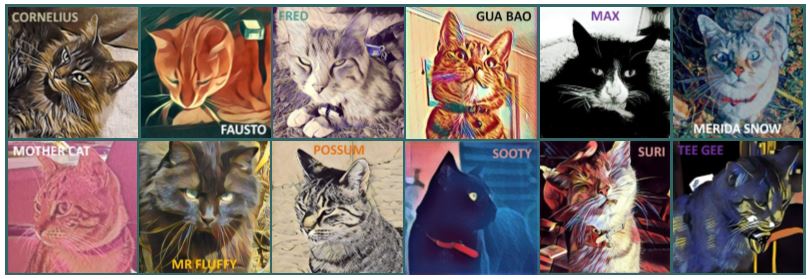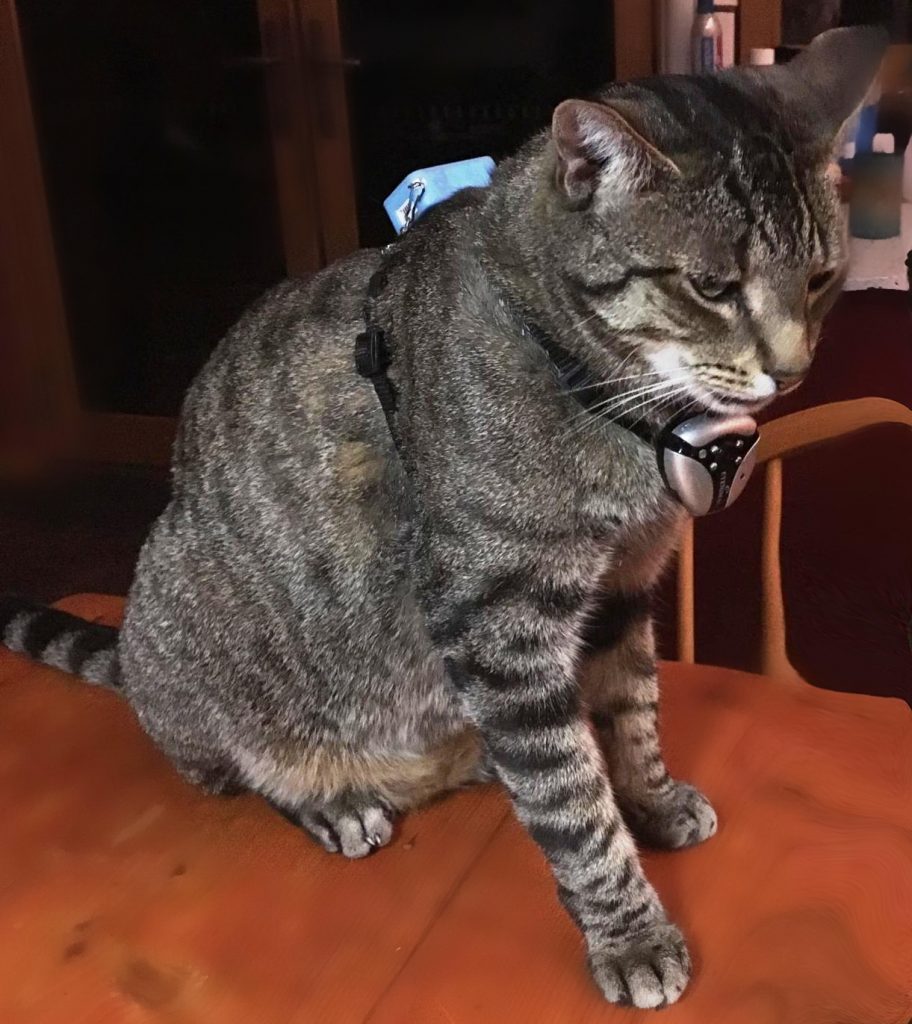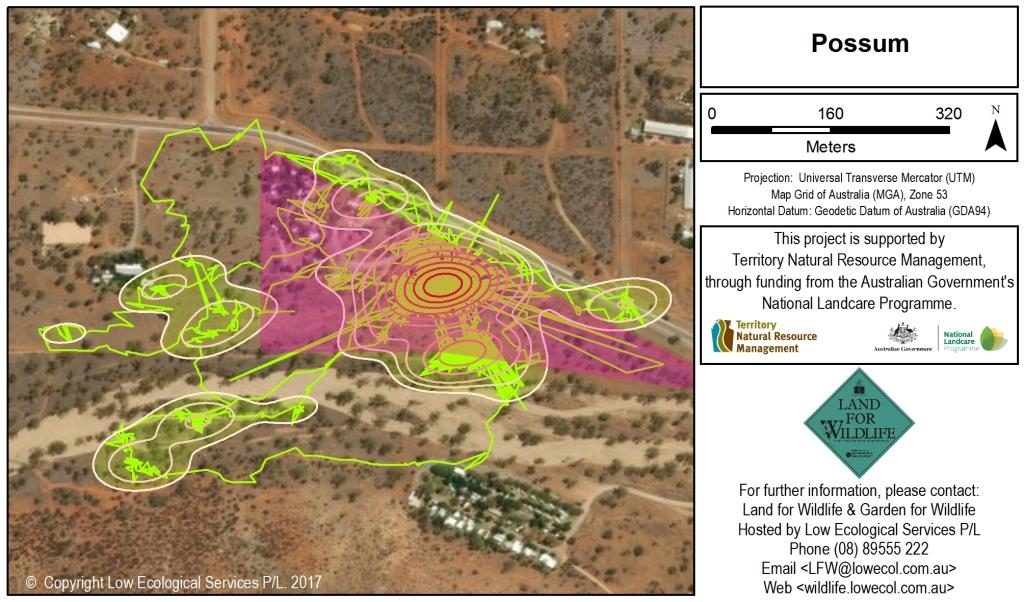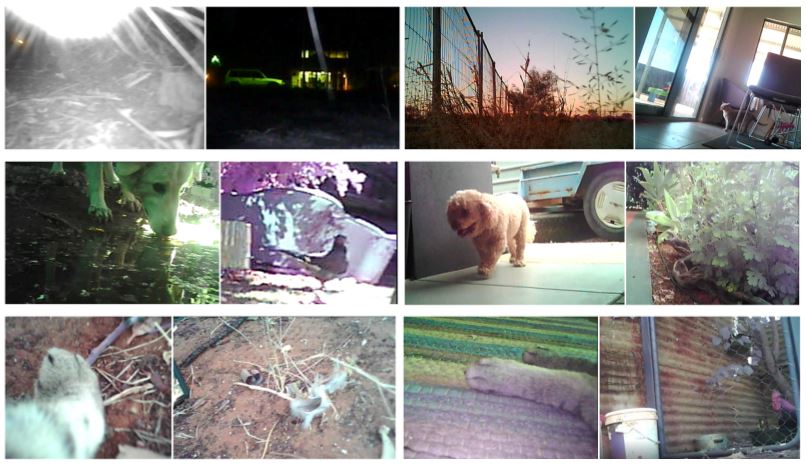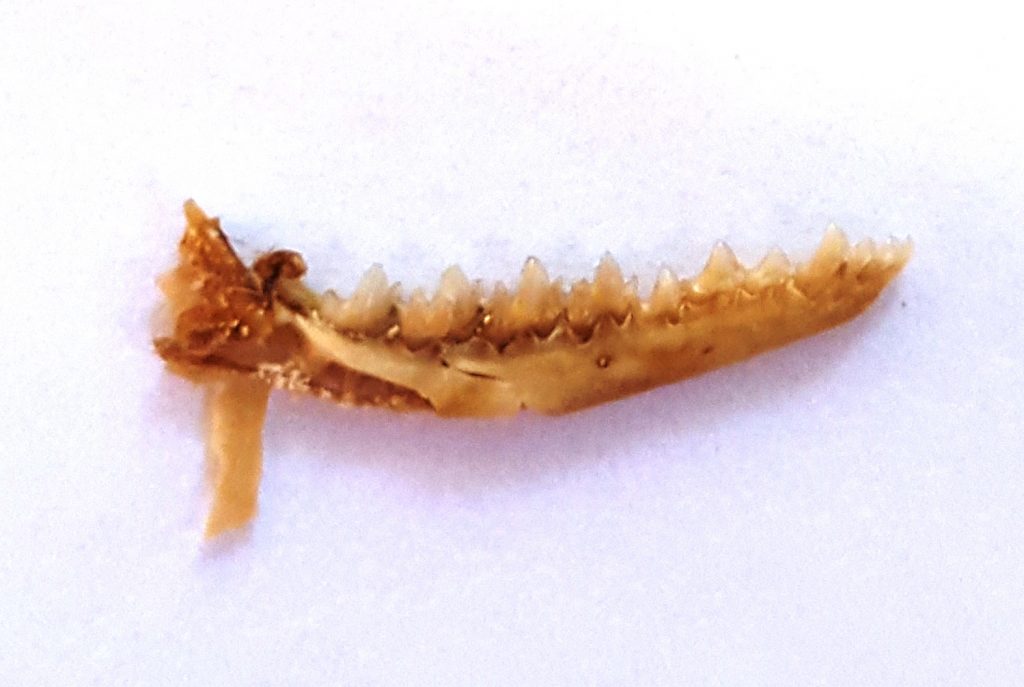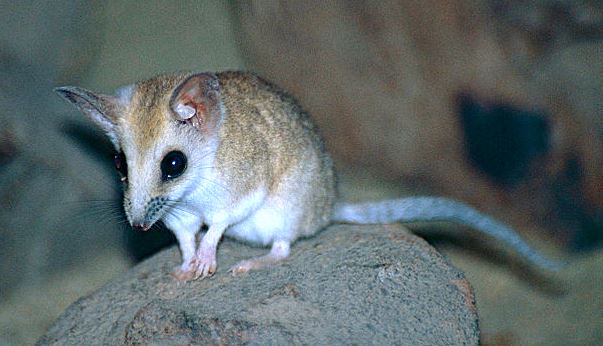The introduction of cats to Australia is considered to be one of the most significant conservation issues in Australia. Cats will often hunt wildlife through instinct, even if their dietary needs are being met. While they have been known to feed on invasive mammals such as mice and rabbits, they also prey on native wildlife. At a local scale, there are currently 12 threatened native species, for which cats are listed as a threatening process. Land for Wildlife is working with domestic cat owners in central Australia to address responsible cat ownership, a key objective of the threat abatement plan for predation by feral cats.
Despite the staggering statistics, there is a great deal of variation in the behaviour of cats (which comes down to differences in management) and the perception of cat owners regarding their cat’s behaviour. Management of owned cats can be varied, ranging from well-cared for individuals that are maintained indoors, to outdoor cats that do not stray from home, and at the extreme scale to roaming cats that may have a negative impact on their surroundings. Poorly managed domestic cats can have a negative impact on wildlife populations through predation, add to the feral cat population, become a nuisance to neighbours, have an increased risk of catching or transmitting disease, or suffer injury as a result of roaming behaviours.
A recent survey conducted by the Alice Springs Town Council, found that over a third of cat owners allow their cats to roam, which indicates that there are a significant number of cats roaming within the Alice Springs municipality. The Alice Springs Town Council by-laws state that a domestic cat must be registered with the council, and that a cat must be kept within the property boundary at all times of the day. Despite the high number of roaming cats in Alice Springs, most of the general public care about the issue of predation by cats on native wildlife. This gives hope that the management of domestic cats can be modified with some education regarding the local bi-laws, the impact of domestic cats on local wildlife and the extent to which an individual cat can roam.
The Domestic Cat Monitoring and Awareness in Alice Springs program was established to engage domestic cat owners regarding the travelling patterns of their feline friends, to help them to make informed and responsible cat management decisions. We conducted a range of activities, including surveys conducted by domestic cat owners to ascertain their management priorities, GPS-tracking of domestic cats to assess the movements of domestic cats while roaming outside of the house and develop spatial maps for engaging with domestic cat owners, video surveillance of domestic cats to obtain visual footage of the travelling behaviour of roaming cats, and scat analysis to identify the diet of cats that roam outside of the house.
A total of 15 cats and their owners took part in the latest round of Domestic Cat Monitoring and Awareness, with only a half of the Alice Springs cats being registered with the town council. While all cats included in the study are known to roam away from home, three quarters of the owners agreed that their pet cat could be impacting wildlife while outside.
CatLog (CatTraQ) devices were used to track the domestic cats for a one-week period. The data obtained was used to develop spatial maps and calculate core home ranges of the domestic cats. According to the trackers, cats were recorded outside of the property boundary on 47 % of occasions, with 53 % of the tracked points occurring on the owner’s property. The cats in the tracking project travelled 31 m from home on average, with the furthest distance from home averaging 352 m. One particularly adventurous cat travelled as far as 500 m from home. The average cat did not venture further from home at night, compared to during the day, which is contrary to popular belief. The area covered by cats during the tracking period was 14 hectares on average (ranging from 3.5 Ha to 27.1 Ha), however the core home range area was 1.4 hectares on average (ranging from 0.2 Ha to 10.8 Ha).
A trial of the Eyenimal Cat Camera was conducted to determine the behaviour of the cats while roaming. Recording video footage of cats while outside of the house helped to highlight what the cat was doing while roaming. The cats involved in the surveillance portion of the project exhibited a range of behaviours, from extensive periods of sleeping, to active roaming in nearby native habitat. Several cats were observed wandering along river beds and neighbouring hillsides, trailing the scent of an animal, or simply exploring. Only one cat was caught on camera feeding on wildlife (a grasshopper). Video summaries for each cat are available on the Land for Wildlife YouTube channel: Domestic Cat Monitoring Stories, or view the playlist below:
To assist us in understanding the impact of predation by cats that are roaming outside, we analysed scats for foreign food items. Food items we were on the lookout for included components of birds, rodents, reptiles and insects. Processed commercial food was expected to break down, while other animals consumed would likely leave portions of bone, scale or fur, which could then be identified. Alice Springs based domestic cat scats contained insect material, Red Kangaroo (Macropus rufus) and Fat-tailed Dunnart (Sminthopsis crassicaudata). The mammal contents were confirmed via hair samples contained in the scats, as well as a fragment of lower mandible (jawbone).
The Dunnart findings are surprising, given that there is very little knowledge regarding the habitat preferences of Fat-tailed Dunnarts close to urban areas. This native animal is commonly found in grass, shrub or woodland in native habitat surrounding Alice Springs. The species is listed as ‘Least Concern’ and is therefore not threatened, despite many other native mammals becoming threatened by introduced predators, such as feral cats. The presence of Dunnarts in town blocks of Alice Springs is great news and the findings indicate that the Dunnart is capable of residing on, or travelling through, suburban town blocks.
The finding that a scat contained remains of Red Kangaroo is not as surprising, given that kangaroos can be found more commonly on the outskirts of Alice Springs. Kangaroo tail is also often brought into town by Indigenous community members returning from hunting trips. The skin and small meat remains of this species can often be found near fire pits following such visits to town. Kangaroos living on the outskirts of town may also succumb to demise through other means, before being fed on by roaming cats.
The domestic cats involved in this study roamed to neighbouring properties, road verges, adjacent bushland and some cats were observed to impact the local wildlife through predation. The results of the study show that even the domestic cats that do not leave their property boundary often, still have the capacity to negatively impact native wildlife. This suggests that the management of the domestic cats could do with improvement. We encourage all domestic cat owners to consider managing their domestic cats in a manner that will protect our native wildlife.
Responsible cat management options include:
- De-sex your cat to prevent it from adding to the feral cat population
- Microchip and register your cat with the Alice Springs Town Council so that it can be returned to you if it goes missing
- Keep your cat indoors so that it is not a nuisance to neighbours and does not negatively impact the local wildlife
- Install an outdoor cat play area to provide your cat with environmental stimuli that won’t impact on the local wildlife
- Provide toys and play options for your cat to keep it stimulated indoors
- Fit your cat with a bell, luminescent scrunchie, sonar or other device to alert wildlife to its presence
- Provide food ad libitum so that your cat has adequate access to food, to limit its dependence on wildlife as a food source
- Don’t release unwanted animals into the bush
The full Domestic Cat Monitoring and Awareness results report can be found on the Land for Wildlife website: wildlife.lowecol.com.au/about/projects/catmonitoring
This project is supported by Territory Natural Resource Management, through funding from the Australian Government’s National Landcare Programme.
Categories:
Cats, Pets, Territory Natural Resource Management

